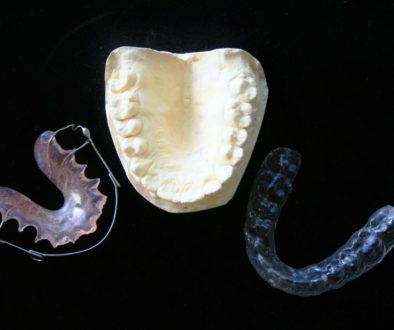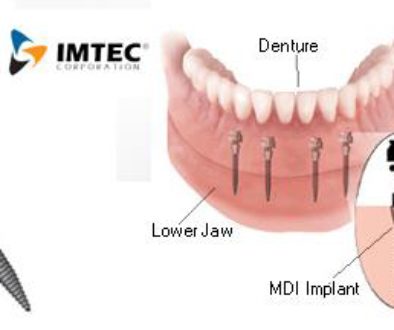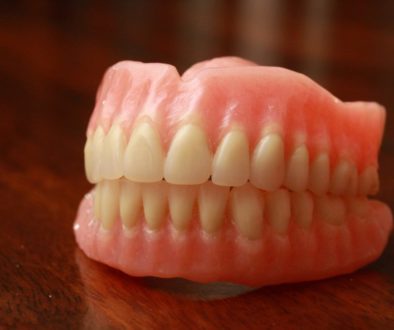When Can You Repair A Denture?
Full Dentures

Repair or reline
- A tooth fell out. This is usually the easiest type of repair and can often be done at your dentist’s office.
- The denture is loose but there isn’t a lot of wear to the teeth or pink acrylic . A reline is the best option here.
- A small crack that doesn’t extend all the way through the denture. As long as the crack hasn’t changed how the denture fits, you can usually get a good result with a repair.
Replace
- Cracked in half or cracked enough to change how it fits. Even the best repairs in this case won’t hold up forever.
- Severely worn teeth. A lot of people will ask if they can just replace the teeth on their denture. Technically it can be done but it isn’t a good idea. Making a new denture is the only way to get a good result.
- Holes in the denture. It is pretty rare to see holes in dentures unless they have seen some pretty significant use over time. Once the wear has progressed to this point the only option is a new denture.
- Cosmetic problems with tooth size, alignment, or position. Cosmetic problems can rarely be fixed without making an entirely new denture.
Flexible Partial Dentures
Flexible partial dentures are some of the most difficult types of dentures to repair. Traditional types of dentures use hard acrylic or metal substructures that can easily be added to. Flexible partial dentures on the other hand use a nylon type material that doesn’t lend itself easily to repairs. This makes them lighter, better looking, and resistant to breaking but challenging in other ways.
Repair
- A tooth fell out.
Replace
- It doesn’t fit anymore or stay in place.
- Need to add a tooth where you had one extracted.
Partial Dentures With Metal Clasps

Cast metal partial dentures with metal clasps are the easiest types of dentures to repair. Their big advantage is the fact that they have a very durable metal structure as their base. New clasps and teeth can be relatively easily attached to this structure without making an entirely new denture.
Repair
- One or possibly two broken metal clasps.
- A tooth fell out.
- You had to have a tooth extracted and would like to have it added to your partial.
Replace only the teeth and acrylic
- Severely worn teeth.
- The pink acrylic part no longer fits to your gums.
- The acrylic is broken.
Replace the entire partial
- Any portion of the metal is cracked.
- Multiple clasps missing.
The Repair Process
If you do decide to get your denture repaired there are a couple of things you can do to make the process go more smoothly.
- Be prepared for some impressions!
- For partial dentures they’ll take an impression with the partial already in place (in most cases).
- For full dentures they’ll usually have to remove some material from your denture and then use the actual denture to take an impression of your gum tissue.
- Most dentists will send your denture out to a lab for the repair. Be prepared to be without it for several days. Repairs in a dental lab are usually far more permanent than if the dentist does the repair themselves.
As with all advice on this website, please check with your dentist for a final recommendation. These recommendations may not apply to your specific case!




February 26, 2018 @ 11:19 pm
I used to think that there was a long process to a denture repair, but I am glad that was clarified from this article. This will help my friend as well who is in need of this service. She would like to know to be prepared for some impressions as part of the process.